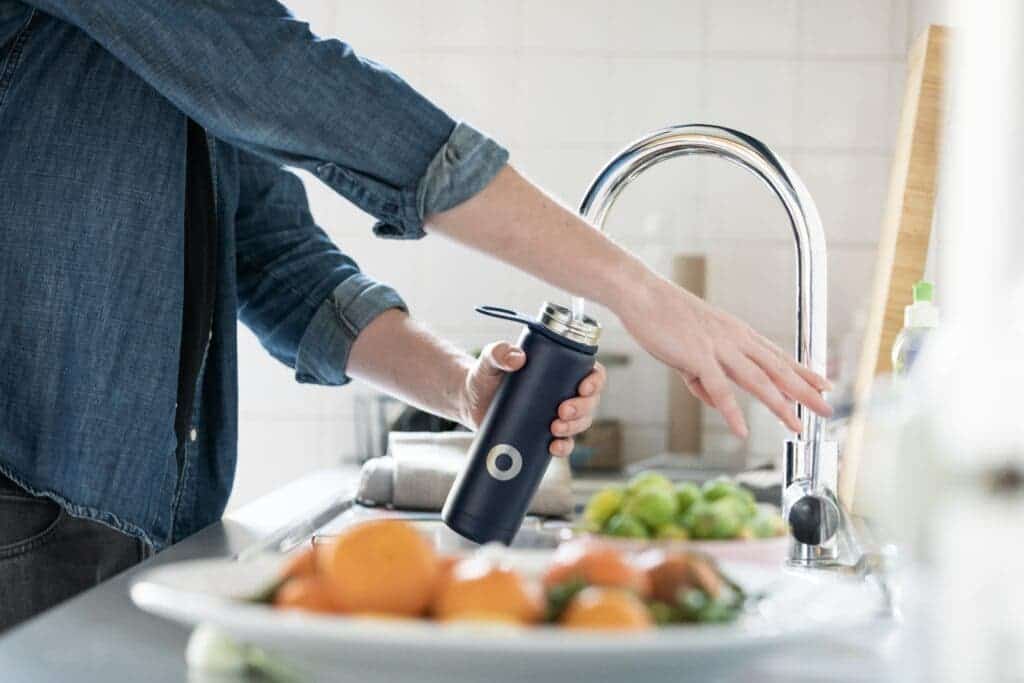Extreme heat above 90 degrees Fahrenheit (32 degrees Celsius) is a common occurrence in many parts of the world in the summer, but with climate change taking a toll, temperatures are surging way past that. Summers are getting hotter and hotter, and heatwaves are becoming the norm.

Extreme heat events, especially (but not only) when doubled by humidity, can lead to physical exhaustion and illnesses. Heatwaves are, according to the World Health Organization, “among the most dangerous of natural hazards, but rarely receive adequate attention because their death tolls and destruction are not always immediately obvious.” So if you are in a heatwave, or just want to be safe in the hot weather, here are some simple actionable tips to follow.
Don’t leave your house unless you need to
It’s 2022, we’ve been through lockdowns, and we know how to stay home when we need to (hopefully). The first thing to do in a heatwave is to avoid leaving your house unless you really, really need to. Seriously, it sounds simple (and it is), but the first thing to keep in mind is to avoid exposing yourself to even more unnecessary heat.
In your home, you can control things, you can drink as much water as you want, you may have AC or a fan, it’s better than going out in the sunlight.
Turn your house into a cool fortress

If you are staying at home, you have a better chance of controlling your environment, but you should still keep an eye on things. Here’s what to pay attention to:
- Drink a lot of water: Seriously, you can become dehydrated faster than you think, it’s better to be on the safe side. Even if you don’t feel thirsty, it’s useful to take a drink every once in a while and make sure you’re drinking enough liquids. Consuming water-rich foods can also help.
- Solar Shades: Use window blinds and shades during the day. Sure, some are better than others, but everything gets the job done — from roller shades to woven wood shades during the day. Keep them closed and invest in good-quality blackout shades. Blackout shades help sunlight to enter the inside during peak hours.
- AC filters: Change your air conditioner’s filter every 2 to 3 months to keep it functioning well.
- Fans: Use fans for modestly warm weather. However, these may not protect you from extreme heat waves. Still, if your house has no AC, a fan is an important addition to encourage air circulation.
- Keep windows open at night: Opening all your windows at night will help you achieve cross ventilation. This approach allows the windows to push cool air into the house.
- Limit intense activity — both for yourself and your appliances: Computers can get quite hot if you’re working from home, so that’s worth keeping an eye out for. Also, home workouts may be important, but pay extra attention if you want to do them at home during a heatwave.
Always use sunscreen
If you do go outside, be sure to always use sunscreen. Skin cancer is on the rise, and there’s no real reason to leave your skin vulnerable, especially when it’s so easy to take care of it. Generally, you should reapply sunscreen every two hours, especially after sweating or wiping. Even if you stay inside, if you work or sit a lot next to a window, you may want to consider using sunscreen. Use an SPF50 sunscreen or above for maximum protection.
How to identify heat stroke
Heat stroke is a major threat to people in times of summer, and it’s important to be able to recognize the signs of heat stroke.
It starts when the sweating mechanism fails to keep the body cool — it’s either too hot or too humid (or both) to cool down the body to a manageable level. As body temperature rises fast, there can be serious threats, so it’s important to recognize these signs and ask quickly.
Heat illness is not very straightforward to find as most people often have mild symptoms, which can snowball into a more risky situation. Follow these general guidelines to recognize heat stroke in its early stages.
- Heat stroke gives rise to extreme thirst and a general feeling of discomfort — malaise.
- The person may feel shaky or disoriented as an effect.
- Often confusion and speech problems such as slurred speech can indicate the formation of heat stroke.
- In severe cases, the individual can get affected by nausea or stomach upset.
If you feel the signs of a heat stroke creeping on you, try to cool yourself as quickly as possible. Immerse yourself in cold water if possible, use cold packs, drink cold water, and stay calm.
Staying cool indoors and outdoors
Regardless of where you are, whether at work, at home, outside, or someplace else, there are some general tips you can follow during a heatwave.
- Hydration: During heatwaves, your body loses fluids quicker than normal. For this reason, you should drink water at regular intervals. Hydration is a crucial component of the action plan against heat waves. Take breaks on a regular basis to keep your body relaxed. Drink water in a large quantity throughout the day and use mobile apps to get a reminder every hour or two.
- Foods to avoid: Avoid high-sugared and caffeinated beverages such as coffee, cola, and mainstream energy drinks.
- Working hours: Try to finish the most physically demanding job earlier in the day when the temperature is much lower.
- Ventilation: Use portable fans, misters, or automated shades to arrange better ventilation indoors. Encourage air circulation.
- Pay attention: Symptoms of heat illness include cramps, heavy sweating, weakness, dizziness, etc. If you find any of these happening, get alerted.
- Move slower: Even when in haste, move slowly but steadily. This will save you from overheating your own body by limiting the mechanical movements of the limbs.
- Protect your skin: When outdoors, wear a good quality SPF sunscreen and find shades such as bus shades wherever you can.
- Use cold towels: When the body gets overheated, place cold towels with ice on the wrist, neck area, and forehead. It helps in cooling down your overall body temperature.
- Clothing: In the summer, you should wear loose clothing to prevent suffocation and heavy sweating. It will allow your skin to breathe.
- Limit exercise: Exercise may be a healthy habit for many people but increases your heart rate and body temperature overall. As a result, it is clever to skip cardio workouts and focus on stationary isometric exercises such as plank or wall sitting.
Conclusion
The weather’s getting worse as our climate continues to change. Ideally, we’d limit our greenhouse gas emissions and make sure that we avoid the worst heating in the future. But in the meantime, it’s best to be prepared. Don’t take the hot weather lightly, and don’t take needless risks, especially during a heatwave.









